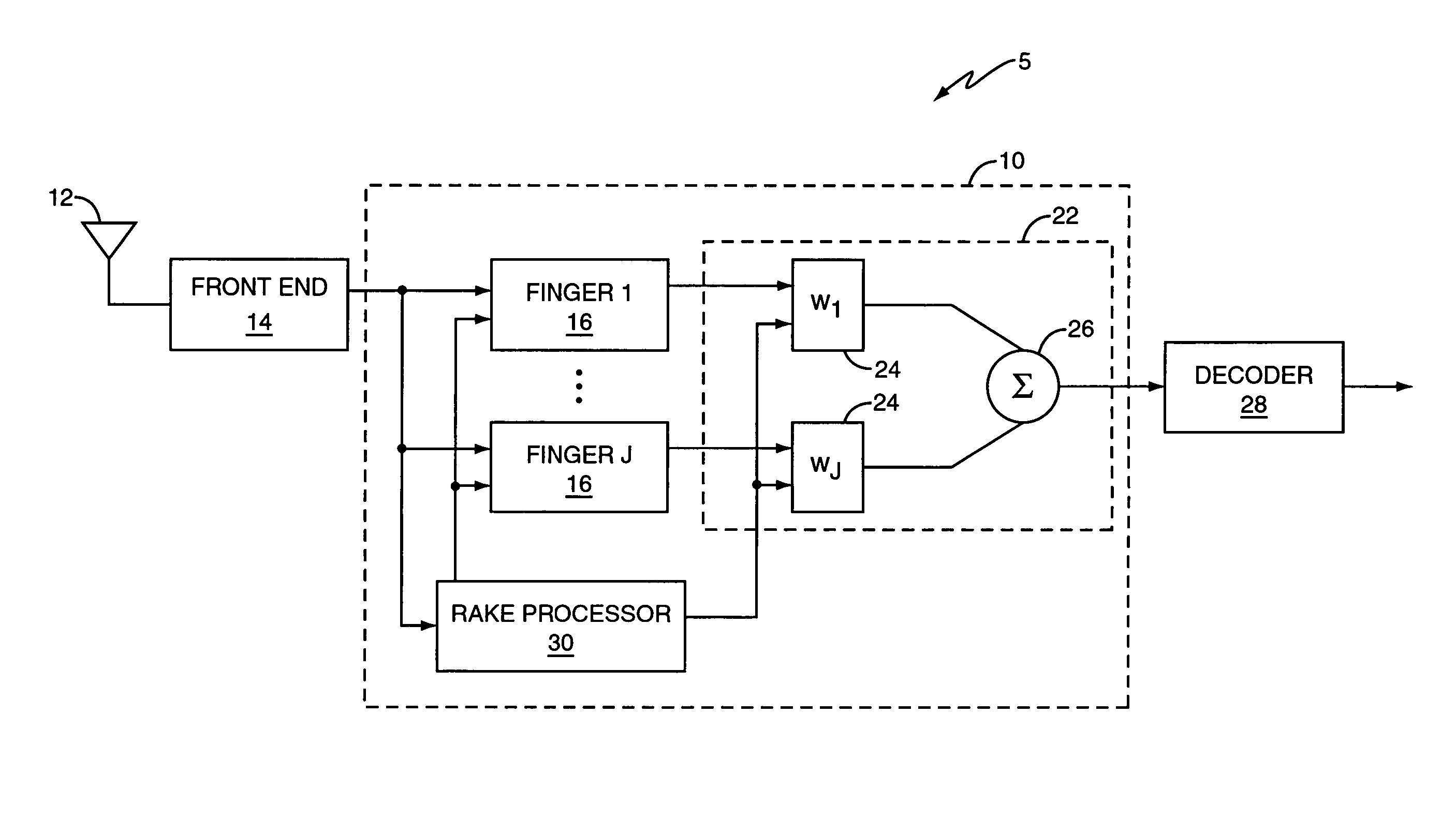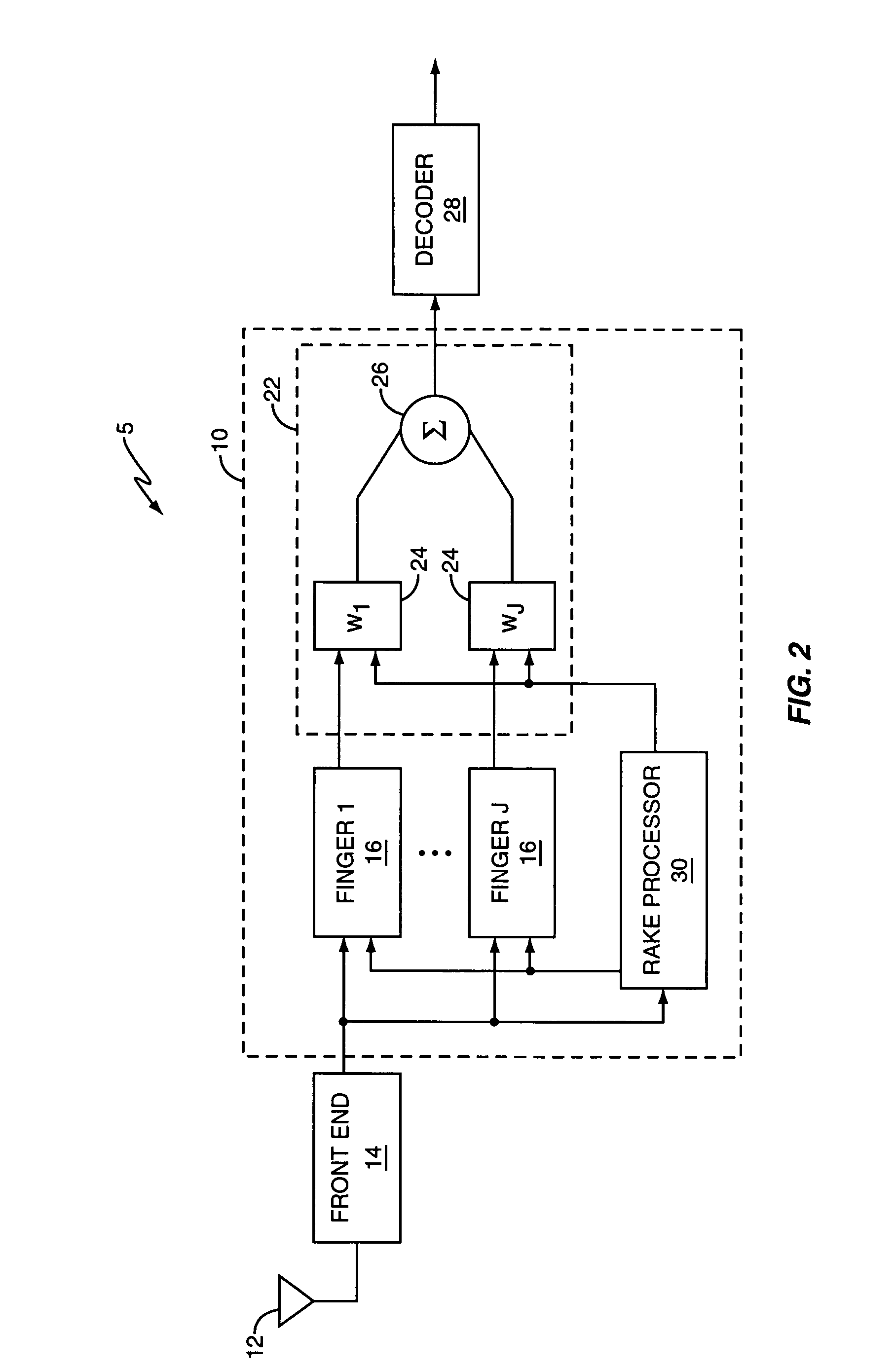Adaptive timing recovery via generalized RAKE reception
a generalized rake and timing recovery technology, applied in the direction of transmission, electrical equipment, etc., can solve the problems of orthogonality property loss, signal fading, and inability to precisely place the rake fingers at the peak of the pdp
- Summary
- Abstract
- Description
- Claims
- Application Information
AI Technical Summary
Benefits of technology
Problems solved by technology
Method used
Image
Examples
Embodiment Construction
[0021] The present invention relates to a method and apparatus for determining finger placement in a RAKE receiver or chip equalization receiver. As used herein, the term RAKE receiver includes a generalized RAKE (G-RAKE) receiver as described in U.S. Pat. No. 6,363,104, which is incorporated herein by reference. The invention has application in single-input single-output (SISO) receivers, multiple-input, single-output (MISO) receivers, and multiple-input, multiple-output (MIMO) receivers.
[0022]FIG. 2 illustrates a wireless receiver 5 including a RAKE receiver 10 according to one exemplary embodiment of the invention. The wireless receiver RAKE receiver 5 comprises a receive antenna 12, a receiver front-end 14, a RAKE receiver 10, and a decoder 28. RAKE receiver 10 comprises a RAKE processor 30, a plurality of RAKE fingers 16 to detect respective signal images in a multi-path signal and a weighting network 22 to combine the outputs of the RAKE fingers 16 to generate a combined RAKE...
PUM
 Login to View More
Login to View More Abstract
Description
Claims
Application Information
 Login to View More
Login to View More - R&D
- Intellectual Property
- Life Sciences
- Materials
- Tech Scout
- Unparalleled Data Quality
- Higher Quality Content
- 60% Fewer Hallucinations
Browse by: Latest US Patents, China's latest patents, Technical Efficacy Thesaurus, Application Domain, Technology Topic, Popular Technical Reports.
© 2025 PatSnap. All rights reserved.Legal|Privacy policy|Modern Slavery Act Transparency Statement|Sitemap|About US| Contact US: help@patsnap.com



